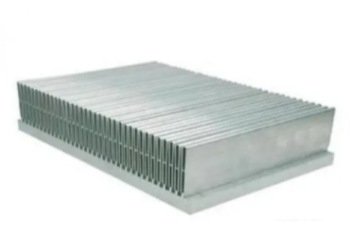The mystery of semiconductor radiators takes you into the fantastic world of electronic equipment!
With the rapid development of science and technology, electronic equipment is increasingly inseparable from the support of semiconductors. However, semiconductors generate a lot of heat during operation. How to effectively solve this problem? Today, we will reveal the secrets of semiconductor heat sinks to you and let you understand their working principle, latest technology, and future trends!

(Semiconductor heat sinks)
How semiconductor radiators work?
The semiconductor heat sink is one of the critical components in electronic equipment. It is mainly responsible for quickly dissipating the heat generated by the semiconductor chip to ensure the regular operation of the semiconductor chip. Its working principle mainly includes three methods: heat conduction, convection, and radiation.
1. Thermal conduction: Semiconductor radiators use the high thermal conductivity of metals, ceramics and other materials to quickly conduct the heat generated by the semiconductor chip to the radiator. Common materials with high thermal conductivity include copper, aluminum, silver, etc.
2. Thermal convection: The radiator takes away heat through forced convection with the surrounding air. Typically, radiators use fans or other ventilation devices to enhance convection.
3. Thermal radiation: The radiator transfers heat to the surrounding environment through radiation. In some cases, thermal radiation can account for a significant portion of the total heat dissipation.
The Latest Technology of Semiconductor Radiators
Many new semiconductor heat dissipation technologies have emerged in recent years to meet electronic equipment's efficient heat dissipation needs. The following are some of the most representative technologies:
1. Liquid cooling technology: Use liquid coolant (such as water, ethylene glycol, etc.) to remove heat through circulating flow. This method has high cooling efficiency and is suitable for high-power and high-heat scenarios.
2. Heat pipe technology: Utilize the efficient thermal conductivity of heat pipes to transfer heat to the radiator quickly. Heat pipes have the advantages of small size, fast heat transfer, and uniform heat dissipation.
3. Microchannel technology: Create tiny channels on the radiator to allow liquid to flow in the channels, increase the heat dissipation area, and improve heat dissipation efficiency.
4. Phase change material cooling technology: Utilize the phase change process of phase change materials to absorb heat and achieve rapid cooling. This material absorbs heat when the temperature rises and releases heat when the temperature drops.
5. Nanofluid cooling technology: Add nanoscale particles to the liquid coolant to improve its thermal conductivity and fluidity, resulting in more efficient cooling.

(Semiconductor heat sinks)
The future trend of semiconductor radiators
With the continuous development of technology, semiconductor radiators will also usher in more innovations and changes. The following are several development trends for semiconductor radiators in the future:
1. More efficient: As the power of semiconductor chips continues to increase, future semiconductor radiators will pay more attention to improving cooling efficiency and reducing the impact of heat accumulation on device performance. At the same time, for emerging application fields such as new energy vehicles and 5G base stations, efficient heat dissipation solutions will be more important due to increased power conversion efficiency and total heat density.
2. Thinner and lighter: To meet the increasingly miniaturized and thinner needs of electronic equipment, future semiconductor radiators will pay more attention to optimizing volume and weight, making the equipment thinner, lighter and more portable. At the same time, the thin and light design also helps improve the energy efficiency of the equipment and reduce costs.
3. Intelligent control: Future semiconductor radiators will have intelligent control, which can automatically adjust the heat dissipation rate according to the operating status of the device and the ambient temperature, ensuring that the device can maintain optimal performance in various environments. This intelligent control function can be realized through sensors, controllers and actuators.
4. Utilization of renewable energy: With the improvement of environmental awareness and the advancement of renewable energy, future semiconductor radiators will try to use recyclable energy (such as solar energy, wind energy, etc.) for cooling to reduce energy consumption and carbon emissions. For example, solar-powered cooling systems can dissipate heat from electronic devices.
Supplier
PDDN Photoelectron Technology Co., Ltd. is a high-tech enterprise focusing on the manufacturing, R&D and sales of power semiconductor devices. Since its establishment, the company has been committed to providing high-quality, high-performance semiconductor products to customers worldwide to meet the needs of the evolving power electronics industry.
It accepts payment via Credit Card, T/T, West Union, and Paypal. PDDN will ship the goods to customers overseas through FedEx, DHL, by sea, or by air. If you want high-quality HEATSINKS, please send us inquiries; we will help.
